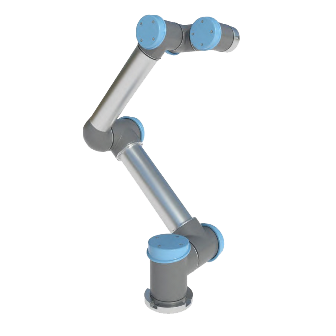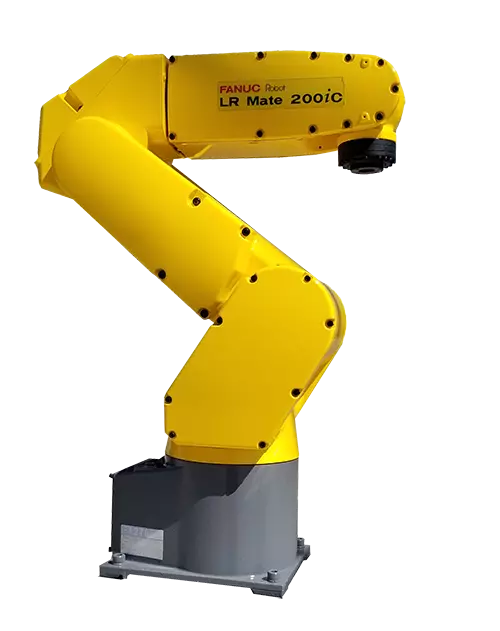Implementing industrial robots in manufacturing will grow production output. Higher output results in increased productivity, lower production costs, and larger profit margins. Incorporating the FANUC M-20ia along factory floors will optimize operations with its speed, accuracy, and consistency which ultimately helps increase the output of a manufacturing operation. Factory robots can grow production output through the following ways:
- • Higher Production Volume - Industrial robots can produce higher production volumes in less time than manual labor and other forms of machinery. The ABB IRB 2600 and other robot manipulators operate at fast speeds with no breaks required. They immediately move from part to part without missing a beat. They can also handle greater workloads than humans, with a single industrial robotic arm being the equivalent of 3 to 4 workers. Not only are they fast, but they can operate around the clock, seven days a week. More parts can be processed in shorter cycles, which significantly boosts productivity levels allowing for greater output.
- • Better Ergonomics - In manufacturing accidents and injuries are common due to the hazardous and dangerous nature of most production related jobs. When those occur they disrupt productions with unplanned downtime and labor shortages. Automating dangerous jobs with the Yaskawa MH180 improves the ergonomics of a factory, preventing accidents and injuries from occurring. Fewer disruptions occur, allowing manufacturing to run smoothly. The decrease of manufacturing related accidents allows for higher output as fewer disruptions result in higher productivity rates.
- • Error Mitigation - Human error is a big contributing factor to lower production output. With manual labor human error is unavoidable as workers can mishandle materials, lose concentration, tire, or simply be inaccurate with their work. When errors occur time must be taken to correct those mistakes. Rework and scrapped parts hinder productivity and production output. Automating with the FANUC LR Mate 200ic mitigates errors by removing human involvement. Robotic manipulators are programmed with application parameters, ensuring accuracy for every part. Fewer errors means less rework needed allowing for greater production output.
- • Greater Uptime - Incorporating articulated robots into manufacturing results in greater uptimes for factories. Manufacturing robot arms do not require breaks unlike humans. Twelve hour factories can become twenty-four hour factories. Six axis robots are a reliable labor source that is incredibly consistent. They can also be redeployed for multiple tasks, ensuring a robot or operations never go idle. In addition, time is not needed for training when processes change. The Universal UR10 can be reprogrammed and immediately performing a new task. Increasing factory uptime is key for growing production output.
- • Improved Use of Employees - Instead of dedicating most of your workforce to repetitive, dull, and tedious tasks, handling robots can be implemented to automate such processes. Automating material handling with the Motoman HP20D frees up employees to focus on more value adding, critical aspects of manufacturing. This allows for better use of employees as they can work on important manufacturing processes that make better use of their talents while robots automate the repetitive and less desirable jobs. This can streamline employee duties allowing them to better focus one their job and they will likely be more productive on tasks they enjoy. Operations become more efficient, allowing output to grow.
Robots Done Right is the place to start when it comes to used robots. Contact us if you are interested in buying or selling your used robot.

